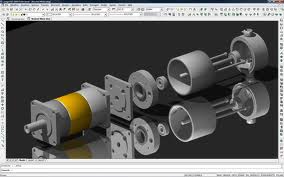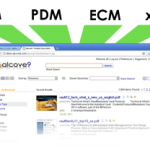Everyone knows that using the design of an existing part or assembly as a starting point for a new part or assembly can reduce development time and the risk of making fundamental design errors. Designers and draftsmen have done that for years. Big corporations went through the expensive and lengthy task of creating templates so people can use them as a starting point for a new design and/or to embed acquired knowledge of a certain design or process right inside the template.
 All of that was great, and still is, but there lies a fundamental objection. A lot of people need access to the actual, previously created models and designs. Why? Even though you have embedded the “tribal knowledge” inside the template, it’s still very valuable for designers to see and interrogate the previous design. It’s eminent for them to review the history, capture lessons learned, explore little details and features, etc. Templates with embedded knowledge can only hold so much information, and usually it is only the rudimentary features and processes that the corporation deems necessary to be present in certain designs.
All of that was great, and still is, but there lies a fundamental objection. A lot of people need access to the actual, previously created models and designs. Why? Even though you have embedded the “tribal knowledge” inside the template, it’s still very valuable for designers to see and interrogate the previous design. It’s eminent for them to review the history, capture lessons learned, explore little details and features, etc. Templates with embedded knowledge can only hold so much information, and usually it is only the rudimentary features and processes that the corporation deems necessary to be present in certain designs.
What makes matters a little more complicated is that not all designs have templates. The process of acquiring the necessary knowledge is very tedious, expensive, and requires constant maintenance. To avoid haphazardly-made modifications, a superfluous task is created for certain people to maintain the template. Therefore, template creation becomes limited to certain popular designs that are either: (1) reused often with few parametric variations, or (2) complicated and tedious designs where using a template may reduce errors in recreating those specific parts or assembly.
“Lost data has caused days of time spent re-creating the data. Lost or difficult to find information affects production and profitability.”
Tech-Clarity, Inc. 2012
If that’s not enough, employers are always faced with the challenge of creating a discipline that will encourage their designers to use existing templates. The challenge stems from the fact that most designers feel constrained if they are forced to follow someone else’s design approach or methods. Consequently, employers and template creators end up limiting template contents to those elements that are common in most designs to garner more use among all designers – a practice that typically leads to even less design reuse than originally desired.
So, where does that leave us and how can we fix it? Simply, the way to increase design reuse is to make previous designs available and quickly accessible – but that’s easier said than done. In some instances, a corporation may have some data sitting in one data management system but the new designs are in another. In other instances, the data is in some legacy system that was never migrated due to the high costs of migration. Or, the company could simply have no data management system altogether and all existing and legacy data is residing on servers and network shared drives under some naming convention that the company devised. In today’s engineering and manufacturing companies, data doesn’t exist in just one place. Companies go through mergers and acquisitions, technology changes all the time – now more than ever, policies and processes are constantly improving, which all cause data to live in multiple places.








10:31 pm
Great article Sam!
I saw this one and thought of you guys. Alcove 9 is ahead of the curve.
http://solidsmack.com/cad/plm-should-be-like-google-really/
3:15 pm
Thanks Brian. We believe we are. I appreciate you thinking of us.